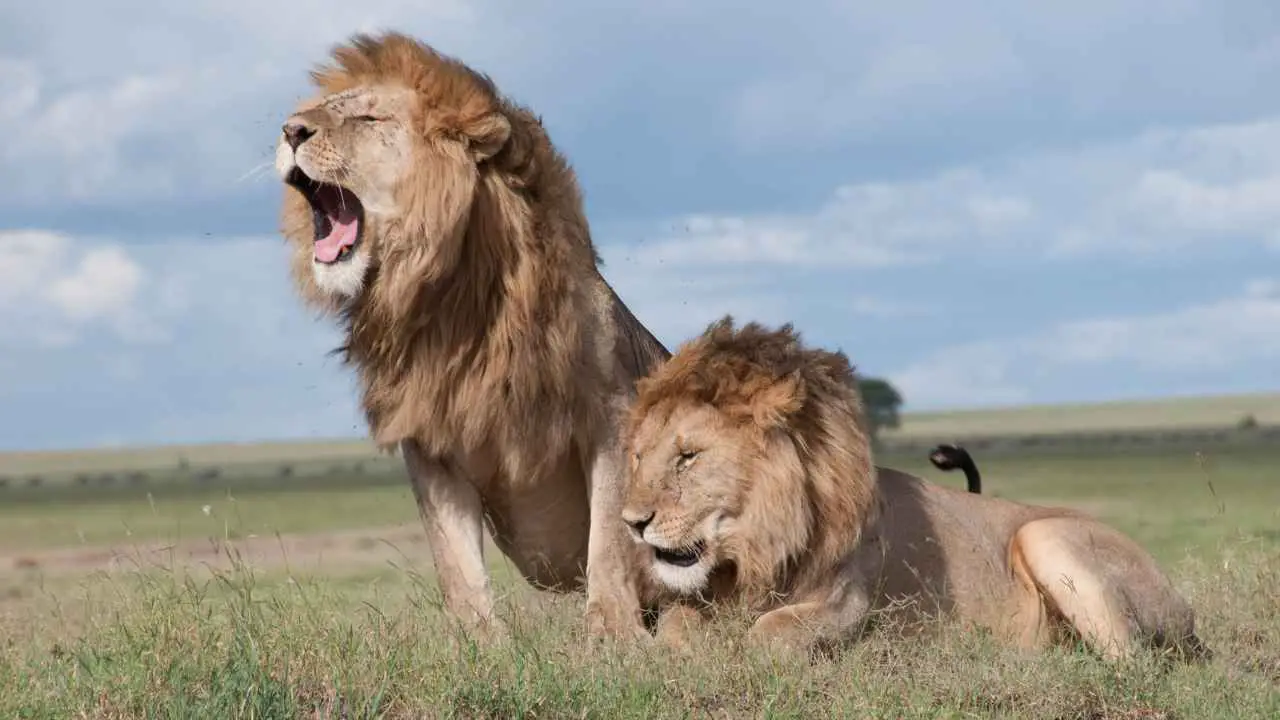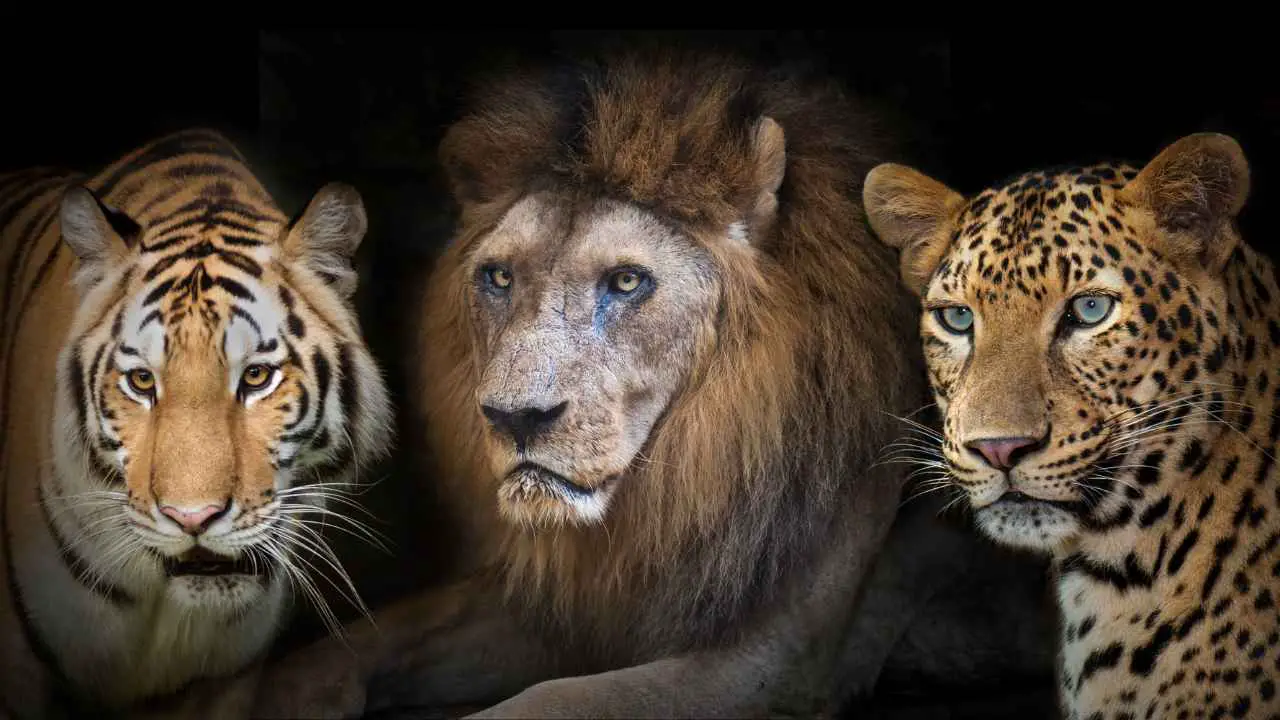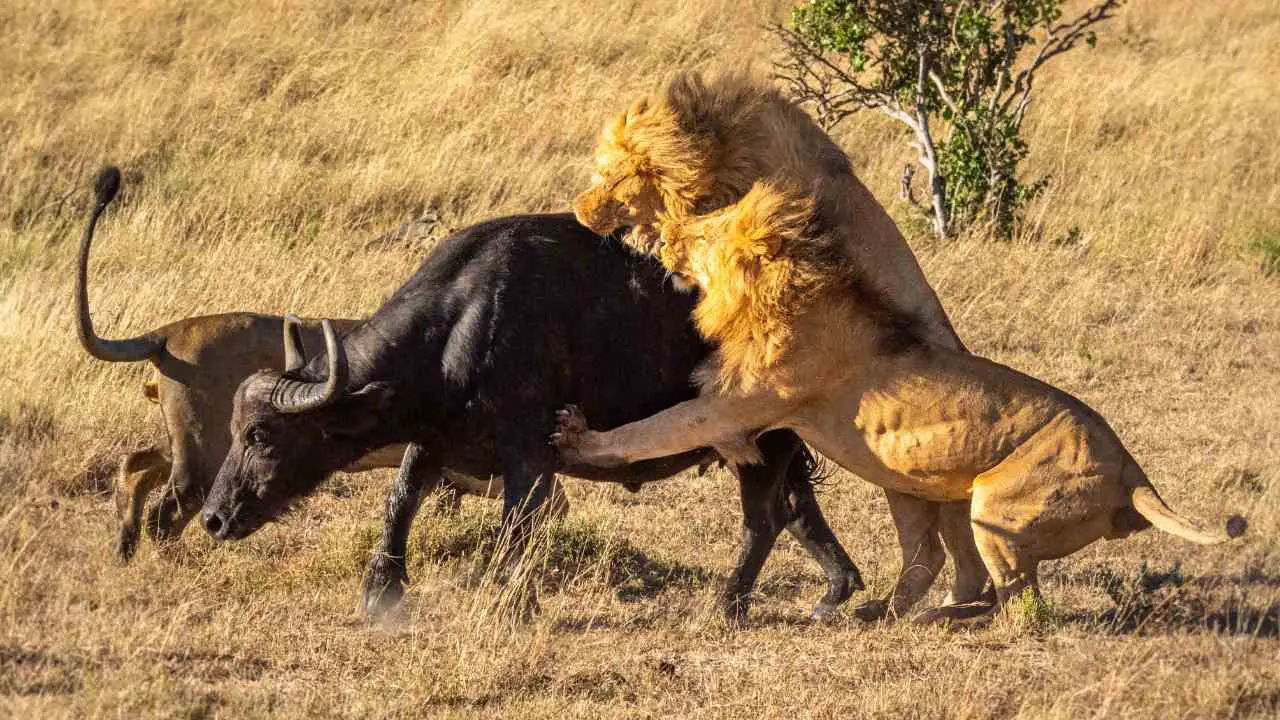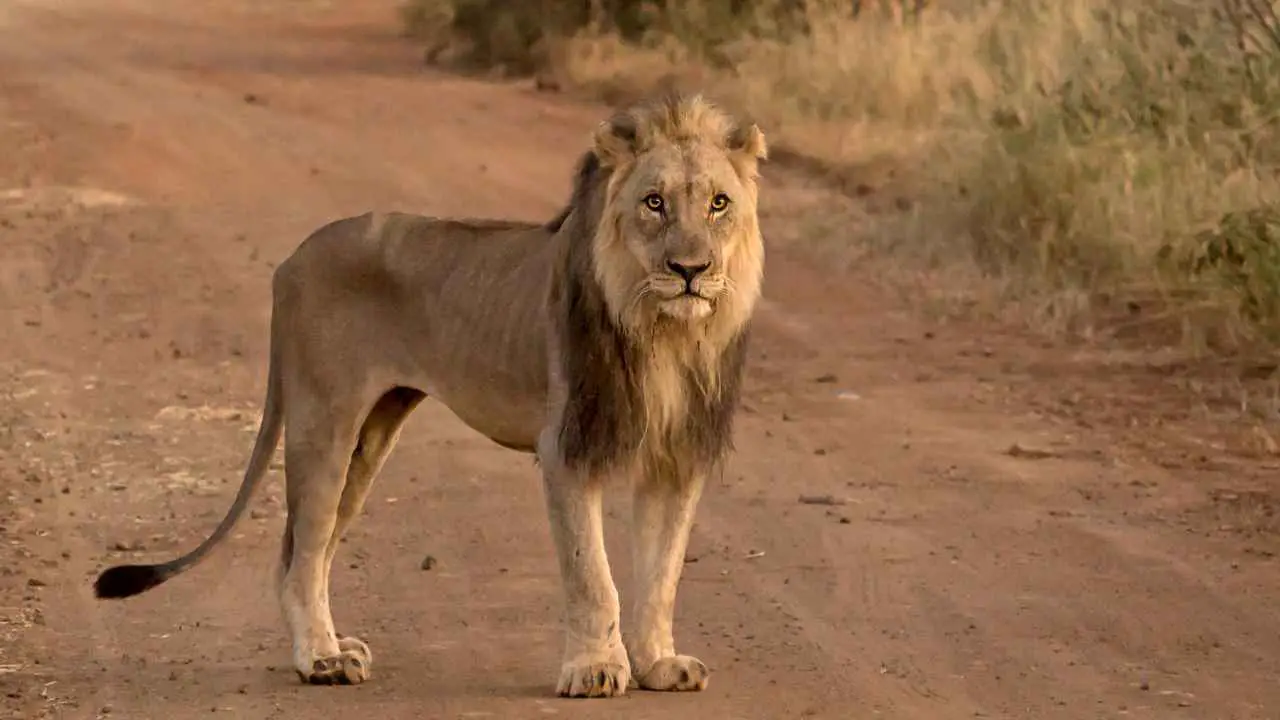Imagine a lion, the majestic ruler of the savannah, facing a challenge we rarely consider: hunger. How long can these powerful creatures survive without a meal? This question isn’t just intriguing; it reveals much about the lion’s strength and survival skills. In this article, we’ll dive into the world of lions to understand what happens when they don’t have regular access to food. We’ll look at how their bodies adapt, compare their abilities to other big cats, explore how they behave when food is scarce, and see what this means for their overall health. Plus, we’ll share some real-life examples of lions in this situation. So, let’s embark on this journey to uncover the secrets of a lion’s survival during tough times.
How Long Can a Lion Survive Without Eating
While lions can survive for extended periods without eating – typically up to two weeks – prolonged fasting can eventually lead to weakened immune systems and decreased reproductive capabilities. Lets discuss this is more detail.
Lion’s Physiological Adaptations for Fasting

When faced with a lack of food, lions, like many other species, rely on a remarkable set of physiological adaptations to endure these challenging periods. These adaptations are a testament to their evolutionary resilience and are key to their survival in the often harsh and unpredictable African savannah.
1. Metabolic Adjustments:
One of the most critical adaptations in a fasting lion is the shift in its metabolic processes. Normally, a lion’s metabolism functions at a rate that supports their active lifestyle, which includes hunting and territorial patrols. However, during fasting, their metabolic rate slows down significantly. This reduction in metabolic activity is crucial as it lowers the lion’s energy requirements, thereby extending their survival period without food.
2. Utilization of Fat Reserves:
Lions have evolved to store energy in the form of fat. This fat, accumulated during times of plenty, becomes a vital energy source during periods of scarcity. When a lion goes without food, its body begins to metabolize these fat reserves. This process provides the lion with the necessary energy to sustain basic bodily functions such as breathing, circulation, and maintaining body temperature.
3. Protein Conservation:
In the absence of food, a lion’s body also undergoes a shift in how it uses proteins. Normally, proteins are essential for muscle growth and repair. However, during fasting, the lion’s body reduces muscle breakdown and conserves protein. This is crucial as excessive muscle and protein breakdown can lead to weakness and decreased chances of survival.
4. Water Conservation:
Lions are also adept at conserving water during fasting periods. They minimize water loss by reducing activity levels and seeking shade during the hottest parts of the day. This adaptation is particularly important as water is often as scarce as food in their natural habitats.
5. Behavioral Adaptations:
Alongside physiological changes, lions also exhibit behavioral adaptations during fasting. They become less active to conserve energy, often resting for extended periods. This decrease in activity helps to reduce caloric expenditure, allowing them to extend their fasting period without severely compromising their health.
Comparative Analysis with Other Big Cats

To fully appreciate the fasting capabilities of lions, it’s enlightening to compare them with their feline relatives, such as tigers, leopards, and cheetahs. Each of these big cats has evolved unique strategies and adaptations for survival, including how they cope with periods of food scarcity.
1. Tigers:
Tigers, predominantly solitary hunters, have a slightly different approach to fasting compared to lions. They can consume large amounts of food in one sitting, much like lions, but their solitary nature means they often go longer between successful hunts. Tigers can survive for up to two weeks without food, similar to lions. However, due to their solitary lifestyle, they are more adept at conserving energy when not actively hunting, which aids in their fasting endurance.
2. Leopards:
Leopards are smaller than lions and tigers, and this size difference influences their fasting capabilities. Leopards can survive for about a week without food, slightly less than lions and tigers. Their smaller size means they have less fat reserves to draw upon during periods of scarcity. However, leopards are incredibly adaptable hunters, capable of eating a wide range of prey, which reduces their periods of fasting.
3. Cheetahs:
Cheetahs, known for their incredible speed, have a different survival strategy. They can go for three to five days without eating, which is less than lions, tigers, and leopards. Cheetahs have a leaner build with less fat storage, and their high-speed hunting technique requires a lot of energy. This means they need to eat more frequently to replenish their energy reserves.
4. Energy Conservation Strategies:
While all these big cats have unique hunting styles and prey preferences, they share common strategies in energy conservation during fasting. They reduce their activity levels, rest more, and stay hydrated to extend their survival during periods without food.
5. Adaptation to Habitat:
The habitat of each big cat also plays a role in their fasting adaptations. Lions, living in prides, often have the advantage of cooperative hunting, which can mean more consistent access to food. In contrast, the solitary nature of tigers and leopards means they must rely solely on their own hunting skills, which can lead to longer periods of fasting.
In conclusion, while lions, tigers, leopards, and cheetahs share the common challenge of surviving periods without food, each species has developed unique adaptations and strategies based on their body size, social structure, hunting techniques, and habitat. Understanding these differences provides a broader context for appreciating the remarkable resilience and adaptability of these magnificent big cats.
Behavioral Changes During Food Scarcity

Food scarcity significantly influences the behavior of lions, prompting a range of adaptations that are crucial for their survival. These changes are evident in their hunting strategies, territorial behavior, social dynamics within the pride, and interactions with other species.
1. Altered Hunting Strategies:
When faced with food scarcity, lions may alter their usual hunting tactics. They might hunt during different times of the day, often becoming more opportunistic and less selective about their prey. Lions, known for their strength and cooperative hunting, might also increase their hunting efforts as a group, targeting larger prey that can feed the entire pride. Additionally, they may venture into new territories in search of food, taking higher risks than usual.
2. Territorial Behavior:
Lions are territorial animals, but during times of scarcity, they may either become more aggressive in defending their territory or more willing to encroach on others’ territories in search of food. This heightened territoriality can lead to increased conflicts with neighboring prides or solitary lions. However, in extreme cases of hunger, the need for food can override territorial instincts, leading them to take greater risks.
3. Changes in Social Dynamics:
Food scarcity can strain the social bonds within a lion pride. While lions typically exhibit cooperative behavior, particularly in hunting and caring for cubs, a lack of food can lead to competition and aggression within the group. The distribution of food among pride members may become uneven, often favoring dominant individuals or those capable of asserting themselves during feeding.
4. Interaction with Other Species:
Lions may also change their interactions with other species during times of food scarcity. They might target unusual or riskier prey, including smaller animals they would typically ignore or larger, more dangerous animals. There’s also an increased likelihood of lions attacking livestock, leading to conflicts with humans living in nearby areas.
5. Conservation of Energy:
One of the most significant behavioral changes is the conservation of energy. Lions will spend more time resting and less time engaged in social activities. Play behavior, especially among cubs, may decrease, and the pride may move less frequently, staying closer to water sources and potential food opportunities.
Impact of Fasting on Health and Longevity

Fasting, while a natural part of a lion’s life, can have significant impacts on their health and longevity, both in the short and long term. These effects touch on various aspects of their well-being, including immune system function, reproductive health, and overall lifespan.
1. Short-Term Health Impacts:
- Immune System Function: In the short term, a lion’s immune system can be compromised during periods of fasting. The lack of nutrients weakens their body’s ability to fight off infections and diseases. This vulnerability increases the risk of contracting illnesses, which can be particularly detrimental in the wild where medical intervention is not available.
- Muscle and Strength Loss: Prolonged fasting leads to the depletion of fat reserves and eventually to the breakdown of muscle tissue for energy. This loss of muscle mass can result in decreased strength and hunting efficiency, which further exacerbates the challenge of finding food.
- Hydration and Organ Function: Dehydration is another concern during fasting, especially in hot savannah environments. Reduced water intake can affect kidney function and other vital organs, leading to various health complications.
2. Long-Term Health Impacts:
- Reproductive Health: Chronic food scarcity can have a profound impact on a lion’s reproductive health. Both males and females may experience reduced fertility during times of prolonged fasting. For females, this can mean fewer estrous cycles and a lower likelihood of successful conception or healthy cub rearing.
- Growth and Development: For young lions, prolonged periods of food scarcity can impede growth and development. This is particularly critical for cubs and juveniles, who require consistent nutrition for proper physical and cognitive development.
- Lifespan: Over the long term, repeated or prolonged fasting episodes can shorten a lion’s lifespan. The cumulative stress and wear on the body from repeated cycles of starvation and refeeding can lead to earlier onset of age-related diseases and a general decline in health.
3. Behavioral and Ecological Consequences:
- Risk-Taking Behavior: Increased risk-taking behavior due to hunger can lead to injuries or even death, as lions might attempt to hunt larger, more dangerous prey or come into conflict with humans.
- Ecosystem Impact: The health of lions as apex predators is crucial for the balance of the ecosystems they inhabit. Their weakened state during prolonged fasting can have ripple effects throughout the food chain, affecting prey populations and competing predators.
Case Studies and Observational Data
While there is a scarcity of specific scientific studies focusing solely on the duration lions can survive without food, various observations and research in wildlife reserves and natural habitats provide insights into this aspect of lion behavior. Here are some key findings and examples:
- Serengeti Research: In the Serengeti, studies have observed that female lions can survive for several weeks on an empty stomach. This endurance is particularly noted during periods when prey is scarce due to seasonal changes. These observations underscore the lion’s ability to withstand prolonged periods without food, although it’s important to note that such conditions are not ideal for their health.
- Feeding Patterns in the Wild: Research from the University of Minnesota’s Lion Research Center indicates that lions may only eat once every two or three days. This irregular feeding pattern is due to the low success rate of hunts and the unpredictability of scavenging opportunities. Lions have distensible stomachs that can hold large quantities of food, which helps them during these intermittent feeding periods.
- Zoo Studies: Comparisons between lions in the wild and those in human care, such as zoos, provide additional insights. While zoo lions have regular feeding schedules, observations indicate that their wild counterparts have adapted to less frequent, more substantial meals, followed by periods of fasting. This adaptation is a crucial survival mechanism in the wild.
- Impact of Fasting on Health: Although specific studies on fasting durations are limited, related research points to the impact of prolonged fasting on lions’ health. It’s noted that extended periods without food can lead to weakened immune systems and reduced reproductive capabilities, as seen in other big cat species.
- Behavioral Observations: Field observations have documented changes in lion behavior during times of scarcity. Lions become more opportunistic in their hunting, sometimes taking risks by targeting larger or more dangerous prey. These behavioral shifts are crucial for their survival during periods of food scarcity.
In summary, while direct studies on the maximum duration lions can survive without food are limited, observational data and related research provide valuable insights. These studies highlight the lion’s remarkable adaptability to irregular feeding patterns, their physiological and behavioral coping mechanisms, and the impact of prolonged fasting on their overall health and well-being. Understanding these aspects is essential for conservation efforts and for ensuring the health of lion populations in their natural habitats.

